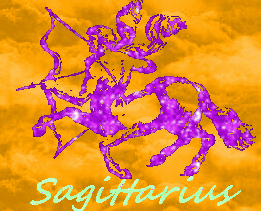

This is not only the field of the rains, but of the whole movement of Water from the Earth to the sky and back. Vayu is the deity of the Atmosphere (Antariksha), which is also identified with the Waters (Apas) or the Ocean. Earth is also the ashes (bhasma) left over from the Fire. He is enkindled on the Earth, in a specially dug Earth altar (vedi). Agni is the deity of the Earth (Prithivi). However the cosmic form of Agni as the Sun is identified with the Creator and the Supreme Spirit, who is also Vayu or Indra.Įach of these two great Gods has its respective field of action. Agni is identified with the individual soul and the form aspect of Divinity. Vayu is said to be Ishwara, God or the Creator, or the cosmic spirit, the evident or manifest Brahma (pratyaksha Brahma – Taittiriya Upanishad, Shantipatha), the formless Divinity. For example, the first hymn of the Rig Veda is to Agni or Fire and the second is to Vayu or Wind. Agni (Fire) generates Indra or Vayu (Wind or energy). The Fire moves up to Heaven and then the Wind descends from Heaven to the Earth. Once the Fire is enkindled, the second stage of the Vedic ritual is for the Air or spirit to manifest. Indra is the foremost and most commonly lauded of the Vedic Gods. Of similar great importance is Vayu or Indra, who relates to Air, wind, Prana or spirit. The first of the Vedic Gods, therefore, is Agni or Fire through whom the Yajna proceeds. The zodiac could also be a six day rite, with two signs making for a day and a night.Īgni and Vayu (Fire and Air) and the Worlds of Earth and Water The six day rites had both a day and a night. Each month of thirty days was divided into five six day rites. However the most common set of Vedic Yajnas is the six day (sadaha) rite. The zodiac may evolve out of the idea of a twelvefold Yajna, a yearly Yajna or the Yajna of the sky. Indeed the twelve day Yajna is said to be the most important of Yajnas, through which Prajapati creates the world. Twelve day (dwadashaha) and twelve month (yearly) Yajnas were very important. On an inner level these Yajnas take us beyond mental and emotional fluctuations to the equanimity of pure consciousness or pure internal light.

The yearly Yajna takes one beyond time and all of its fluctuations symbolized by the year and the world of the Sun or Heaven. The monthly Yajnas take one beyond the fluctuations of the month and the world of the Moon or the Atmosphere. Performance of daily Yajnas takes one beyond the duality of day and night and the world of the Earth. This is also to conquer the different worlds or go beyond space. The goal of the Yajna is to conquer these respective divisions of time in order to reach the eternal. Yearly Yajnas reflect the Sun, Heaven, the seasons and the equinoxes.
#Sagittarius earth fire water air full#
Monthly Yajnas relate to the Moon and to the Atmosphere, particularly to the new, full and half Moon. Daily Yajnas relate to Fire and to the Earth, which is enkindled at sunrise, noon and sunset. They are defined as daily, monthly, seasonal, or yearly. All involve various offerings of prayers, mantras, ghee, and food to the sacred Fire as it is enkindled at special times. The Purusha is identified with the Sun, who is time and the Kala Purusha or being of time. The Purusha is the universe personified as a human being, the cosmic man or person. These two, the Creator and the soul, are one as the Purusha, or higher Self. Yet Yajna is also the activity of the soul (the individual human being or Jiva), who through the Yajna gains the fruits of karma as well as union with the Creator.

In the Vedas Yajna is identified with the Creator (Prajapati or Brahma), who through various Yajnas creates the world. The spiritual level reflects Heaven, the Gods or cosmic light forces symbolized by the Sun, Moon and stars. The psychological level relates to the Atmosphere or middle realm and to our inner faculties of mind, prana, speech, sight and hearing. The elemental level reflects the Earth, the gross elements, and the outer form of the sacrifice. The ritual has several levels of application as elemental (adhibhutic), psychological (adhyatmic) and spiritual (adhidaivic). This ritual defines the entire cosmic order (ritam or Dharma). They set forth an elaborate Fire ritual (Yajna) that is identified with time (kala), causation (karma), and space. The Vedas are based upon the concept of Agni or the sacred Fire. Note this is a complex article that requires some knowledge of astrology. Using this model many secrets of the zodiac are uncovered. While the complete logic may not be worked out, enough has been revealed to show the main aspects of the system. It shows how the zodiac could have been invented as a form of Vedic sacrifice (Yajna) following the Vedic view of the Gods, the worlds and the elements. The following article proposes a Vedic rationale for the nature and sequence of the twelve signs of the zodiac.


 0 kommentar(er)
0 kommentar(er)
